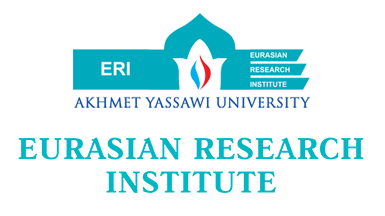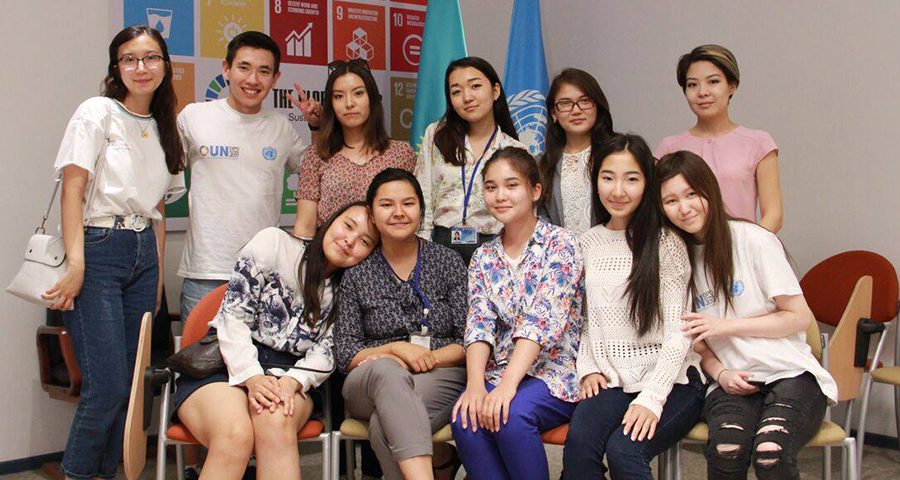Saying that the past 3 years since the previous assessment of the Central Asian region through the prism of the Social Progress Index have been turbulent would be an enormous understatement. Since 2021 the world as a whole and the Central Asian region in particular have gone through immensely significant processes and events, both human-caused and natural, that forever altered the global status quo. This is illustrated explicitly by the global average Social Progress Score – according to the Social Progress Imperative (2024) “after a decade of steady growth, for the first time the world has fallen into a social progress recession”. Regarding the local events and factors that have directly influenced the situation in the region and people’s everyday lives, those are the Russian aggression against Ukraine and all of its consequences, including the country’s isolation (Abdrahmanov and Zhumagulova, 2023); an ongoing and ever-increasing climate crisis (Azour et al., 2023); a steady slide of all of the countries in the region towards having stagnating progress and many more (Eurasianet, 2024).
Focusing on Central Asia itself, there are numerous trends for the region in particular that can be observed between 2020 and 2023. Firstly, since the previous look at the Social Progress Index, there has been an upward shift in the Tiers – currently, three out of five Central Asian countries, namely Kazakhstan, Uzbekistan, and Kyrgyzstan are a part of Tier 3, a level that mostly includes developing countries with sizable and dynamic economies and relatively stable statehoods and societies. Some of the prominent members of Tier 3 are China, Türkiye, Brazil, Indonesia, and Saudi Arabia. Turkmenistan and Tajikistan currently reside in Tier 4, which includes most of the Northern African countries, India, Iran, and Azerbaijan as some of its most well-known members. This highlights a rather tangible and long-standing divide within the region that has not disappeared yet, and which does not seem to be narrowing down currently.
Secondly, despite all of the crises of recent years, the average score of the Central Asian region has managed to increase slightly between 2020 and 2023 – from 64.09 in 2020 to 64.15, indicating a minuscule yet positive trend in terms of social progress. This result is based on two opposing momentums – while four countries of the region demonstrated small levels (between 0.62% and 1.19%) of Social Progress Index growth, Kyrgyzstan’s score has decreased steadily (-2.9%) during the period, dragging the average regional score down with it. A similar picture can be observed regarding the ranking of the countries – three countries of the region (Kazakhstan, Uzbekistan, and Turkmenistan) improved their positions. At the same time, Kyrgyzstan and Tajikistan fell in the ranking by 11 and 1 positions, respectively. Overall, most of the countries of the Central Asian region seem to demonstrate a relatively high level of homogeneity when it comes to the dynamics of social progress.
However, on closer inspection, it can be observed that individual countries have their paths and trends that may distinguish their positions more significantly in the future. Kazakhstan achieved its all-time peak Social Progress Index score of 70.09 in 2021 and has started its first significant decline in terms of scoring in 2022. Before that the republic was steadily climbing the Index for seven consecutive years, since 2014. To be more precise, in comparison with 2020 results (Nadirova, 2021) it can be observed that the decrease happened in two out of three main domains: Foundations of Wellbeing and Opportunity, they fell by 4.66 points and 4.22 points, respectively. At the same time, the final domain of Basic Needs had its score increase by 0.1 to 85.7 by 2023. Undoubtedly, the domain of Basic Needs is important, as it represents such fields of social progress as Safety, Housing, Water and Sanitation, Nutrition, and Medical Care, which are essential to maintain the most basic foundations of the state and society. However, the recent results for Kazakhstan still compose a worrying trend, as the domains of the Foundation of Wellbeing and Opportunity are the ones on which a country’s long-term development is based. This is the case as those domains include such fields as Basic Education, Rights, Freedoms, Inclusivity, Health, and Environment. The two fields that show the worst dynamics are Rights and Voice, and Basic Education with the former steadily falling since 2011, indicating a further contraction in people’s political rights, freedom of peaceful assemblies, and equality. Generally, the domain of Opportunity that incorporates Rights and Voice, Freedom and Choice, and Inclusive Society is the weakest of the three in the case of Kazakhstan, as it scores below the statistical expectations for the country, while Basic Needs and Foundations of Wellbeing perform within the expected range.
On the other hand, the two sectors that have developed the most in recent years in Kazakhstan are Advanced Education and Information and Communications. The former consists of measurements of the number of citable documents produced, overall academic freedom, the proportion of women with advanced education, expected years of tertiary schooling, and the number of quality-weighted universities, demonstrating an overall growth in terms of higher education. The latter is composed of the measurement of the availability of e-government, the number of Internet users, the number of mobile telephone subscriptions, and the World Press Freedom Index, implying a growth in people’s access to information. Both of the mentioned spheres are significant in terms of the further development of the republic, and they demonstrate that it is possible to achieve growth in the sectors that are deemed as important by the government. However, it is also important to pay more attention to the lacking sectors within the index.
When it comes to Uzbekistan, the picture of the recent trends is brighter than that of the country’s neighbors, demonstrating a steady increase in most of the fields since 2011, and showing especially high growth in such measurements as Information and Communications, Rights and Voice, and Advanced Education. While this is still not enough to overtake Kazakhstan, the traditional regional leader, Uzbekistan managed to leave Kyrgyzstan behind and take a solid second place. Taking into account Kazakhstan’s slowly declining score, Uzbekistan might become the most socially progressive country in the region in the coming decade if it continues at its current place. Most of the recent growth is associated with the President of Uzbekistan Shavkat Mirziyoyev era, which witnessed subsequent reforms in political and economic fields (Haas, 2023). Yet both the international community and internal stakeholders are kept guessing about the extent to which the government is ready to go with the reforms, and their future potential impacts (Benson, 2023).
Concerning Kyrgyzstan, the country still performs above statistical expectations in terms of Basic Needs and Foundations of Wellbeing, while maintaining its Opportunity domain within the expected range, which means that despite the recent negative social progress trends and overall economic constraints, the country manages what little resources it has better than most of its neighbors. However, when it comes to the recent trends, it seems that one of Kyrgyzstan’s main regional advantages in terms of Social Progress Index – the country’s score for Rights and Voices has plummeted. Since 2017 the score in that category has fallen so low that it is currently below the republic’s 2011 numbers, erasing years of the previous progress. This is supported by the widely recognized facts of systemic pressure on journalists and international non-profit organizations (Zehrung, 2023). Moreover, Japarov used his post-revolutionary popular support to reform the Kyrgyz constitution and strengthen his presidential power, allowing himself to appoint people to various influential governmental and judicial positions, including judges and heads of law enforcement agencies (Radio Liberty, 2021).
Regarding Turkmenistan, the country demonstrates a small growth in 9 out of 12 metrics in the Index, including even the category of Freedom and Choice. While it is difficult to link this growth with any specific internal factor, this might partially be caused by Turkmenistan’s unplanned gas revenue windfall of 2022 – according to the Asian Development Bank (2023), the country’s GDP has grown by more than 6% due to increase in the volume and price of gas exports. This was the result of Russian aggression against Ukraine and the subsequent fall in Russian gas exports to Europe, which created a vacuum for such countries as Turkmenistan and Azerbaijan to fill. As the conflict does not show any signs of ending in the foreseeable future, Turkmenistan might be able to benefit continuously from that.
Finally, on the subject of Tajikistan, the country has been the lowest scoring in the region since the start of the Social Progress Index measurements in 2011. Structurally, the strengths and weaknesses of Tajikistan regarding the Index are very similar to those of Turkmenistan – scoring average in Basic Needs, low in Foundations of Wellbeing, and extremely low in Opportunity domain, and just a little less than Turkmenistan. The same can be said about the country’s score trends – while Tajikistan is improving slowly, it does so at a rate below that of Turkmenistan. Still, the country is growing, which correlates with the economic side of its advancement as well – according to the World Bank (n.d.) Tajik economy has expanded on average by 7.1% in the last decade. Nevertheless, once more similarly to Turkmenistan one of the biggest sources of growth of the Tajik economy is external and highly volatile – foreign remittances, which in total equal to one-third of the country’s GDP, have a critical place in supporting the household economy (Statista, 2023).
In conclusion, the last 3 years, most of which were spent in the COVID-19 era, have brought some post-COVID-19 consequences that have stalled the development of Central Asian countries in the Social Progress Index. Despite the unique nature of each country on its growth path which is affected by local and international events all of them continue their development process which will be observed closely shortly to see post-COVID-19 era performance.
References
Abdrahmanov, Rahimbek and Zhumagulova, Kamshat (2023). How Kazakhstan helps Russia bypass Western sanctions. Retrieved from https://thediplomat.com/2023/10/how-kazakhstan-helps-russia-bypass-western-sanctions/. Accessed on 14.04.2024.
Asian Development Bank (2023). Turkmenistan – Asian Development Outlook April 2023. Retrieved from https://www.adb.org/sites/default/files/publication/863591/tkm-ado-april-2023.pdf. Accessed on 15.04.2024.
Azour, Jihad, Dudu, Hasan and Zhu, Ling (2023). How the Middle East and Central Asia can better address climate challenges. Retrieved from https://www.imf.org/en/Blogs/Articles/2023/ 11/29/how-the-middle-east-and-central-asia-can-better-address-climate-challenges. Accessed on 15.04.2024.
Benson, Brawley (2023). Uzbekistan’s reformist president makes a U-turn. Foreign Policy. Retrieved from https://foreignpolicy.com/2023/07/28/uzbekistan-mirziyoyev-reelection-reform-democratic-backsliding/. Accessed on 13.04.2024.
Eurasianet (2024). Central Asia is a bastion of “consolidated” authoritarianism – report. Retrieved from https://eurasianet.org/central-asia-is-a-bastion-of-consolidated-authoritarianism-report. Accessed on 15.04.2024.
Haas, Devin (2023). Understanding Uzbekistan: Three key trends to watch. Retrieved from https://emerging-europe.com/news/understanding-uzbekistan-three-key-trends-to-watch/. Accessed on 14.04.2024.
Nadirova, Gulnar (2021). The Social Progress Index Gives its independent assessment. Eurasian Research Institute. Retrieved from https://www.eurasian-research.org/publication/the-social-progress-index-gives-its-independent-assessment/. Accessed on 15.04.2024.
Radio Liberty (2021). Kyrgyz voters approve constitutional changes to strengthen the presidency. Retrieved from https://www.rferl.org/a/kyrgyzstan-constitution-strengthen-japarov-presidency-/31197472.html. Accessed on 14.04.2024.
Social Progress Imperative (2024). 2024 Social Progress Index. Retrieved from https://www.socialprogress.org/2024-social-progress-index/. Accessed on 10.04.2024.
Statista.com (2023). Estimated share of remittances in the gross domestic product (GDP) in the Commonwealth of Independent States (CIS) in 2022, by country. Retrieved from https://www.statista.com/statistics/1365826/remittances-to-gdp-europe-and-central-asia. Accessed on 12.04.2024.
The World Bank (n.d.). The World Bank in Tajikistan. Retrieved from https://www.worldbank.org/en/country/tajikistan/overview. Accessed on 13.04.2024.
Zehrung, Haley (2023). New wave authoritarianism in Kyrgyzstan. The Diplomat. Retrieved from https://thediplomat.com/2023/05/new-wave-authoritarianism-in-kyrgyzstan/. Accessed on 13.04.2024.
Note: The views expressed in this blog are the author’s own and do not necessarily reflect the Institute’s editorial policy.

